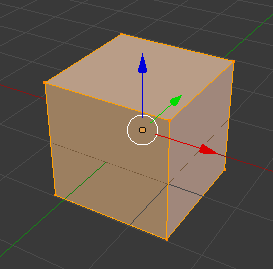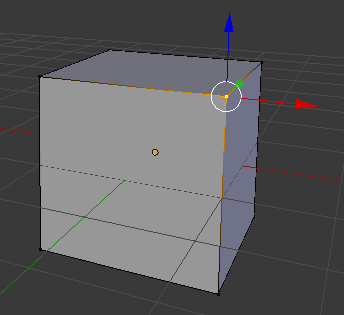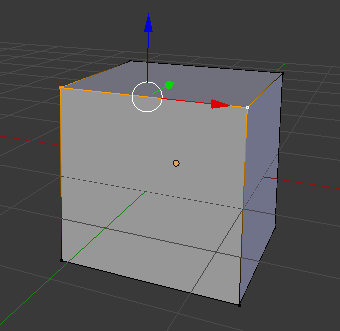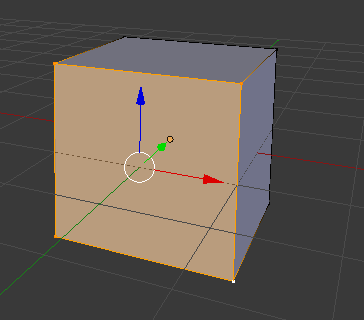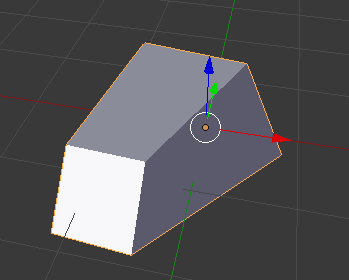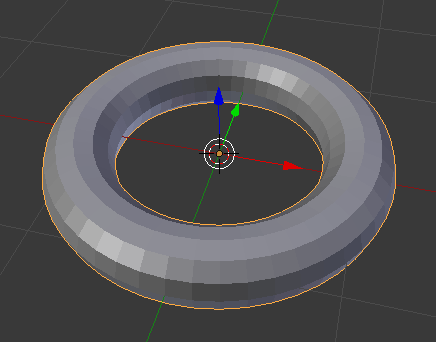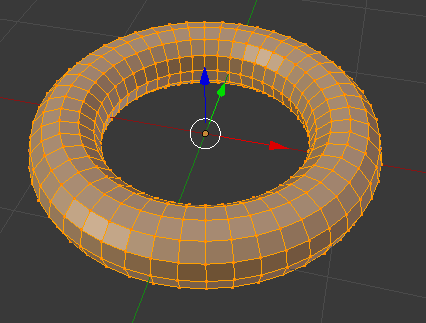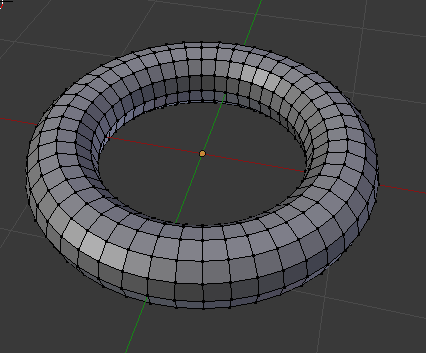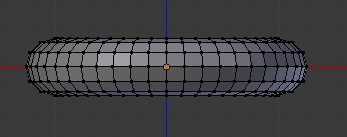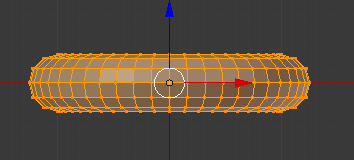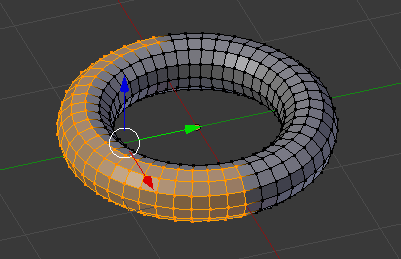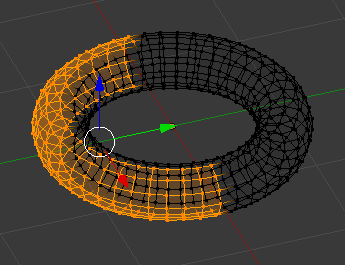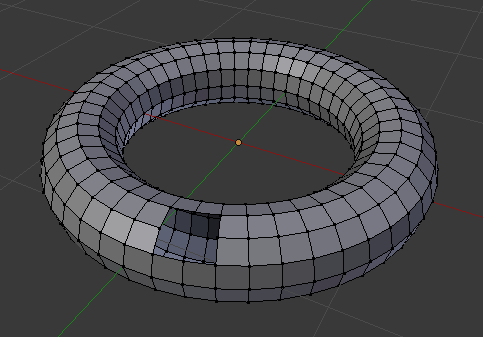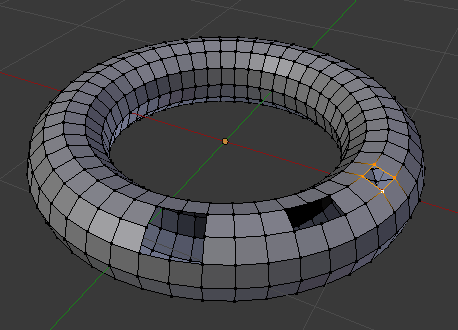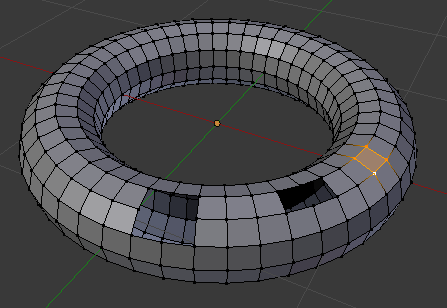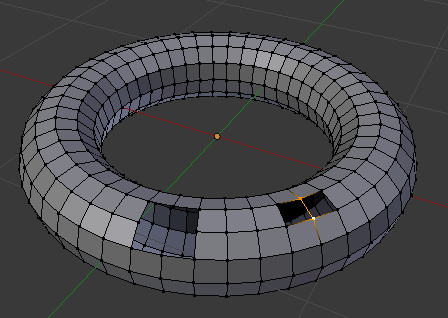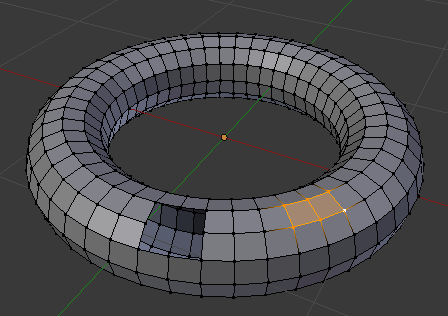Mesh concepts¶
Until now, we’ve been manipulating entire objects (like the cube). We’ve been in Object Mode. To make changes inside the object itself, we need to enter Edit Mode.
The cube is an example of a mesh object. A mesh is made up of individual vertices. These are connected by edges. Edges can be connected together to create faces. To access the vertices, edges, and faces of the mesh and manipulate them, we need to switch to Edit Mode.
Everything you’ve learned so far – changing the view, grabbing, scaling, rotating, selecting, deleting, Space bar, undo – works the same.
| Action | Description |
|---|---|
Tab |
Toggle between Object Mode and Edit Mode |
Exercise: mesh concepts
- With the cube selected, enter Edit Mode (
Tab)
- Deselect all (
A), then select one vertex
- Add an adjacent vertext to the selection, and notice how the edge is highlighted.
- Select the other adjacent vertices to select the face.
- Move, scale, and/or rotate the face and/or individual vertices and/or edges.
- Switch back to Object Mode, and then scale, rotate, and move the entire cube
More selection tools¶
When working on more complex meshes, we need more powerful selection tools.
| Action | Description |
|---|---|
B |
“Bounding box” selection. Drag LMB to select |
Z |
Toggle between solid and wireframe views |
C |
“Circle” selection. LMB to select,
Enter or RMB to confirm. |
MW (when in circle selection) |
Resize the selection circle |
Exercise: selections in solid vs wireframe view
- Switch to Object Mode
- Delete the cube
- Add a torus
- With the torus selected, switch to Edit Mode
- Deselect all
- Switch to front orthographic view (
Numpad1,Numpad5)
- Using
B, select all vertices
- Rotate the view with
MMB. Which vertices were selected? Why?
- Switch to wireframe view (
Z)
- Deselect all again
- Switch to front view again
- Using
B, select all vertices again
- Rotate view again – what happened this time?
Making and filling holes¶
Exercise: the effect of deleting a vertex/edge/face
- Switch to Edit Mode on the torus
- Switch to solid view (
Z) - Select a single vertex and delete it (
X, )
- Elsewhere on the torus, select a single edge and delete it (
X, )
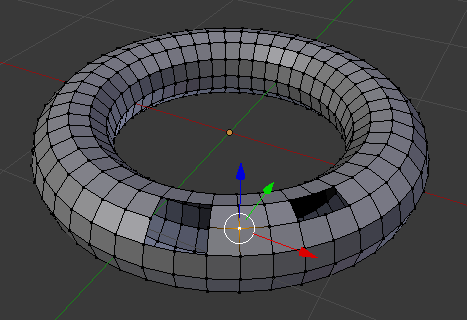
Deleting an edge also removes the faces it’s part of, but doesn’t remove the vertices that make it up.
- Elsewhere still, select a face and delete it (
X, )
Filling in edges and faces¶
In general, it is easier to work with quads (faces with 4 edges) than tris (3 edges). Blender does support ngons (faces with >4 edges), but these can cause issues when exporting for 3D printing.
| Action | Description |
|---|---|
F (in Edit Mode) |
“Fill” (create an edge or face) |
Exercise: creating new edges and faces
- Patch the smallest hole created above by creating a face (select the
4 vertices,
Fto fill)
- Patch the second-smallest hole from above, but first create an edge in the
middle (select 2 vertices,
F), separating the hole into two small quads.
- Then create new faces on either side by selecting all 6 vertices and
hitting
F.
Note
- Leave the larger hole for now – we need to learn another technique.
Selection extras¶
At the bottom of the 3D window are buttons that allow selection of entire edges or faces. Depending on what part of a model or what kinds of tasks you’re doing, it may be more convenient to switch to another mode.

From left to right: vertices, edges, faces
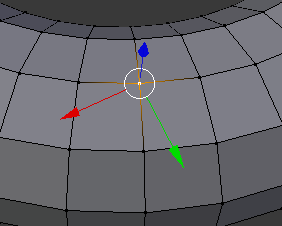
Default vertex selection
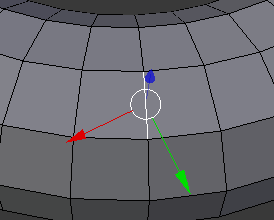
Edge selection: RMB on an edge will select it.
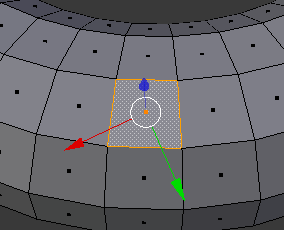
Face selection: RMB in the middle of a face will select it.
See also
See the Blener manual’s introduction to meshes and the editing meshes for lots more on mesh editing.

